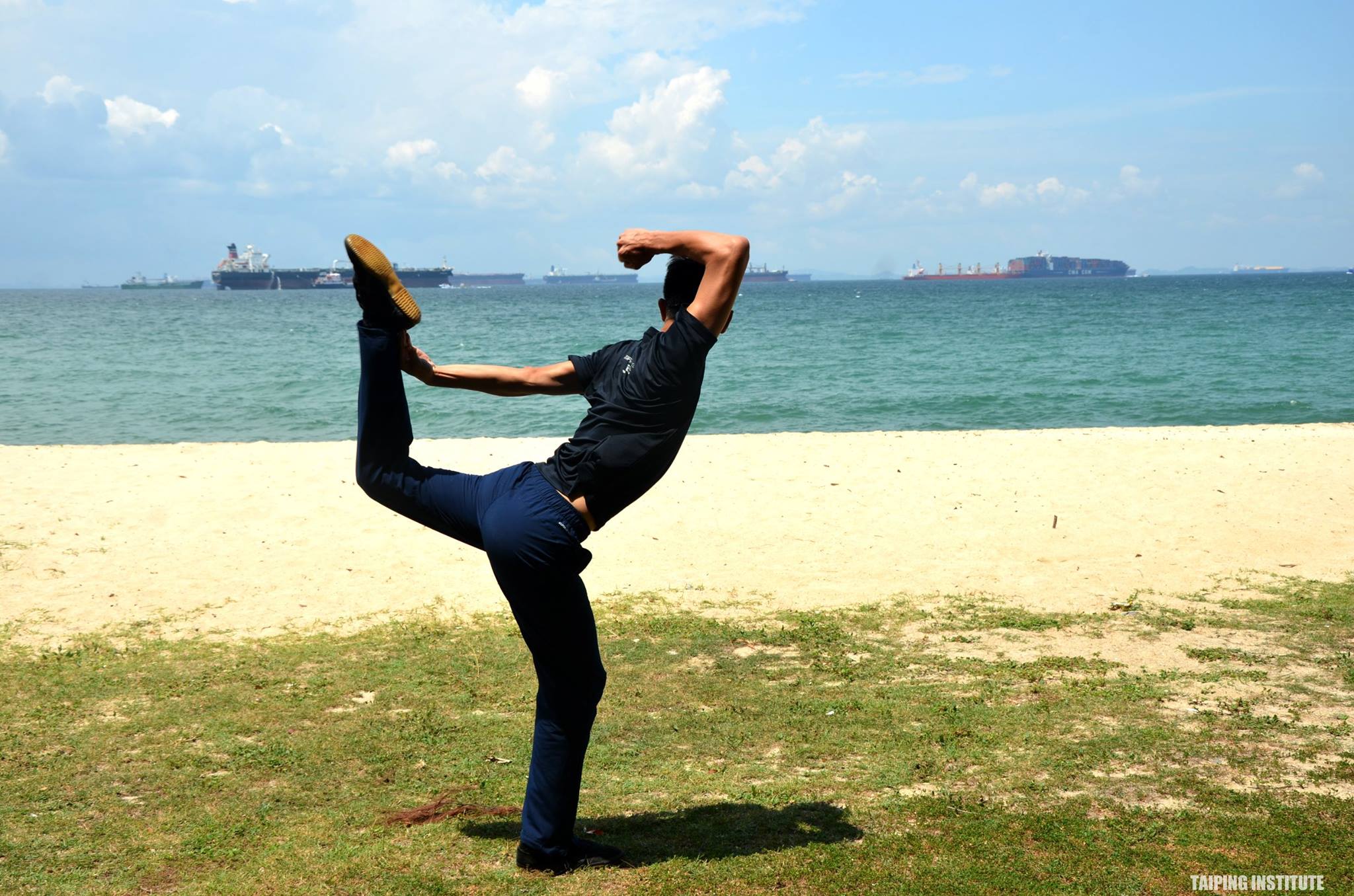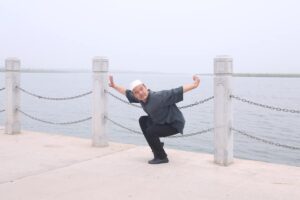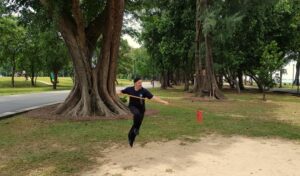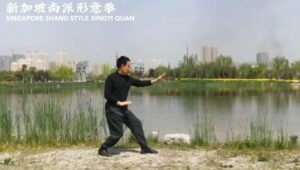“In martial arts, practicing leg techniques is fundamental. If leg techniques are well-trained, the Five Elements will be in harmony, and the Six Harmonies will be aligned. If one does not train their legs, the Five Elements will not be in harmony, the Six Harmonies will not align, movements will not be swift, advancing and retreating will lack agility, and it will be difficult to utilize the tendons and bones effectively. Therefore, one must first focus on developing leg strength.
1. Importance of Leg Techniques (腿法):
- Foundation of Movement: Leg techniques are crucial for mobility, balance, and power generation in martial arts.
- Connection to Five Elements and Six Harmonies: Proper leg training ensures that the Five Elements (Wood, Fire, Earth, Metal, Water) and Six Harmonies (internal and external coordination) are in balance, leading to efficient and effective movement.
- Agility and Speed: Without strong and flexible legs, movements will lack speed, precision, and adaptability.
2. Eight Primary Leg Techniques:
The eight fundamental leg techniques, each with its own characteristics and applications:
- Xian Tui (掀腿): Lifting the leg upward, often used for high kicks or defensive maneuvers.
- Bai Tui (摆腿): Swinging the leg in a circular or sweeping motion, useful for attacking or disrupting an opponent’s balance.
- Qian Tui (前腿): Forward leg techniques, such as front kicks or stepping movements.
- Hou Tui (后退): Backward leg techniques, used for retreating or counterattacking.
- Dian Tui (点腿): Quick, precise kicks aimed at specific targets, often used for speed and accuracy.
- Quan Tui (圈腿): Circular leg movements, useful for evading or redirecting an opponent’s force.
- Cha Tui (查腿): Checking or intercepting movements, used to block or disrupt an opponent’s attack.
- Cun Tui (寸腿): Short, explosive kicks delivered at close range, emphasizing power and speed.
3. Foundational Techniques:
The eight techniques serve as the foundation for more advanced leg techniques:
- Feiyun Duo (飞云跺): A high, upward kick derived from Xian Tui.
- Yuanyang Tui (鸳鸯腿): A backward kick derived from lifting the leg straight upward.
- Lianhua Tui (莲花腿): A swinging kick derived from Bai Tui.
- Hudie Tui (蝴蝶腿): A butterfly-like kick derived from Xian Tui.
- Pi Tui (劈腿): A powerful downward kick derived from Cun Tui.
- Three Points at Close Range (近门三点): A series of quick, close-range kicks starting with Cha Tui.
- Kouxian Zhong (扣仙钟): A circular kick derived from Quan Tui.
4. Practical Application:
- Training Leg Strength: Developing strong and flexible legs is essential for executing these techniques effectively.
- Coordination and Balance: Proper leg training improves coordination, balance, and the ability to transition smoothly between techniques.
- Combat Effectiveness: Mastering these leg techniques enhances a martial artist’s ability to attack, defend, and move efficiently in combat.
5. Philosophical Significance:
- Unity of Body and Mind: Leg techniques are not just physical movements; they require mental focus and internal energy (qi) to execute properly.
- Harmony with Nature: The connection between leg techniques and the Five Elements reflects the Daoist principle of harmony between the human body and the natural world.




